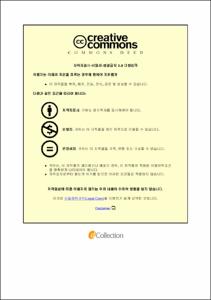CO2 냉매용 압력제어밸브의 비선형 특성 분석 모델 개발
- Abstract
- Recently, industrial system using natural refrigerants have been actually researched. Among them, carbon dioxide is attracting attention due to high stability through high pressure and low critical point. CO refrigerant can be widely used for controlling overall pressure and temperature control.
In this paper, I will develop a simulation model of pressure control valve for CO refrigerant. This model is a model for a valve that reflected the characteristics of CO real gas. I will analyze the characteristics of valve according to the change of some parameters such as diameter of orifice in the valve. Typically, I will analyze the response characteristics of the valve according to changes in a diameter of orifice at the piston of main valve and each areas of piston.
This paper is composed of 5 chapters, and the summary of each chapter is as follows.
In chapter 2, the structure, operating principle, and refrigerant characteristics of valve is studied. In order to develop simulation model of valve, the structure such as flow path inside the valve and operation principle of each part were confirmed.
In chapter 3, “Development of simulation model”, Simulation model is developed using AMESim based on valve structure and operating principle. The cross sectional area of the main valve piston and valve plate were modeled and the initial pressure of each volume element was set. The pressure of the inlet side of the valve and the top of the piston was set to be applied. The initial equilibrium state was set by calculating the initial spring force according to operating principle of the valve. The refrigerant characteristics are based on the Van der Waals equation, not the ideal gas equation. This equation helped to consider the interaction between the gas molcules and the volume of the gas itself. This is to obtain results closer to the experimental results. The response characteristics of the valve according to the temperature change in the volumetric element were investigated according to the heat transfer equation in AMESim. The overall motion equation is presented. The response characteristics of the valve according to the change of piston diameter and spring stiffness are analyzed through simulation results. It was confirmed that the displacement, temperature, pressure, and flow rate of the valve were affected by the parameters change.
In chapter 4, experiment is conducted to verify the validity of the simulation model and the model was calibrated by comparing the experiment results with the simulation results. Experiment was conducted using compressed dry air instead CO₂refrigerant. The simulation model was modified by considering added volume components and flow path inside the valve. The trends of graphs of the experimental and simulation results were similar. After the valve is closed, it can be confirmed that the pressure inside the valve is balanced and maintained a constant value.
- Issued Date
- 2019
- Awarded Date
- 2019. 2
- Type
- Dissertation
- Publisher
- 부경대학교
- Affiliation
- 부경대학교 대학원
- Department
- 대학원 기계시스템공학과
- Advisor
- 장지성
- Table Of Contents
- 제 1 장 서 론 1
1.1 연구 배경 및 목적 1
1.2 연구 방법 및 논문의 구성 3
제 2 장 압력제어밸브의 개요 4
2.1 연구의 개요 4
2.2 압력제어밸브의 형상 및 구조 5
2.2.1 압력제어밸브의 구조 5
2.2.2 압력제어밸브의 작동 원리 7
2.3 냉매 특성 8
2.3.1 이산화탄소 특성 8
2.3.2 압력제어밸브 작동 환경 8
제 3 장 시뮬레이션 모델 개발 9
3.1 연구의 개요 9
3.2 압력제어밸브 초기상태 설정 10
3.2.1 밸브 내부 초기상태 10
3.2.2 스프링력 계산 및 설정 10
3.3 AMESim 모델 개발 11
3.4 시뮬레이션 모델 적용 방정식 12
3.4.1 실기체 상태방정식 12
3.4.2 열전달식 12
3.4.3 운동방정식 12
3.5 시뮬레이션 결과 13
3.5.1 파라미터 변화에 따른 밸브 변위 13
3.5.2 파라미터 변화에 따른 내부 온도 변화 15
3.5.3 파라미터 변화에 따른 내부 압력 변화 16
3.5.4 파라미터 변화에 따른 내부 유량 변화 17
제 4 장 실험 및 시뮬레이션 모델 보정 20
4.1 연구의 개요 20
4.2 실험 장치 및 실험 방법 20
4.2.1 실험 장치 구성 20
4.2.2 실험 방법 21
4.3 시뮬레이션 모델 수정 22
4.4 시뮬레이션 모델 보정 23
4.4.1 실험 및 시뮬레이션 결과 비교 23
4.4.2 고찰 29
제 5 장 결 론 30
참고 문헌 32
부 록 34
- Degree
- Master
- Files in This Item:
-
-
Download
 CO2 냉매용 압력제어밸브의 비선형 특성 분석 모델 개발.pdf
기타 데이터 / 1.39 MB / Adobe PDF
CO2 냉매용 압력제어밸브의 비선형 특성 분석 모델 개발.pdf
기타 데이터 / 1.39 MB / Adobe PDF
-
Items in Repository are protected by copyright, with all rights reserved, unless otherwise indicated.